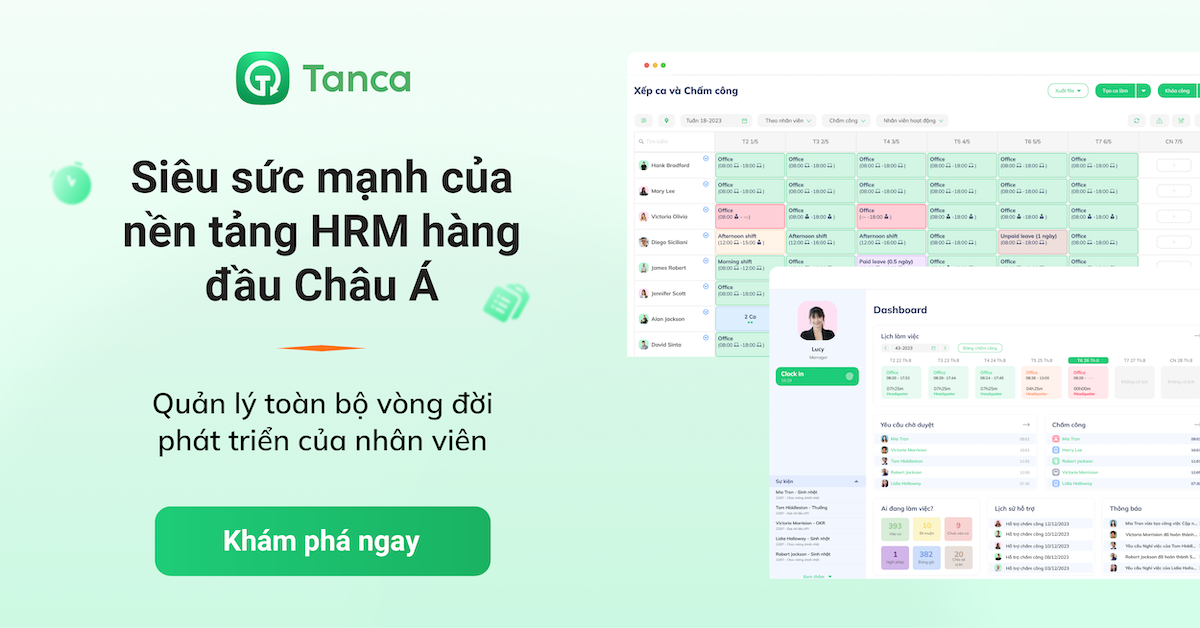As remote work continues to dominate the employment landscape, developing effective employee engagement strategies has become essential for HR professionals. With many employees feeling disconnected from their organization’s mission and purpose, it is crucial to implement practices that foster a sense of belonging and community among remote teams. Effective engagement strategies not only enhance team morale but also drive productivity and retention, making them crucial for organizational success. With Tanca's guidance, HR can implement innovative approaches to foster a sense of belonging and community among remote teams, ensuring that every employee feels valued and engaged.
Why Remote Employee Engagement Important?

Let’s face it: remote work has become a staple in today’s professional landscape, and with that shift comes the pressing need for effective employee engagement strategies. Engaged employees are not just happier; they are also more productive, motivated, and committed to their organization’s goals. When employees feel connected to their work and valued by their teams, they are more likely to go the extra mile, which directly impacts overall business performance.
However, remote work presents unique challenges that can lead to feelings of isolation and disconnection. Without the casual interactions of an office environment, remote employees may struggle to maintain a sense of belonging. According to a Gallup survey, only 34% of U.S. employees were engaged at work as of mid-2023, which is a slight increase from 32% in 2022. However, the connection of remote employees to their organization's mission has reached a record low, with only 28% of remote workers strongly agreeing that they feel connected to their organization's purpose. This decline highlights the challenges of maintaining engagement in a remote work environment, where feelings of isolation can negatively impact productivity and overall business performance. Furthermore, engaged employees are 17% more productive and contribute to 21% greater profitability, emphasizing the critical need for effective engagement strategies in remote settings.
Given these challenges and the significant impact of employee engagement on productivity and profitability, it’s essential to explore effective strategies that can help foster a sense of connection and belonging among remote teams.
Remote Employee Engagement Strategies For HR

Effective Communication
Effective communication is considered one of the most important aspects of any organization, especially in today’s fast-paced and often remote work environment. Let’s be real: without clear communication, confusion can quickly spiral out of control. When employees don’t understand their roles, responsibilities, or the company’s goals, productivity plummets.
Choosing the appropriate medium for your message is crucial. For quick responses, use instant messaging or phone calls, while more complex topics can be addressed through email or video conferencing. Popular platforms like Slack, Zoom, and Microsoft Teams facilitate real-time interactions and help streamline communication.
Create Remote Work Policies
HR should establish clear remote work policies that define expectations, communication protocols, and well-being initiatives. First, outline specific work hours and availability to help employees balance their professional and personal lives effectively. Implement regular check-ins and utilize various communication tools like video conferencing and instant messaging to maintain transparency and foster connection among team members.
Set Clear Expectations
Setting clear expectations is vital for boosting remote employee engagement. When employees understand their roles and responsibilities, it fosters accountability and direction, leading to improved productivity and job satisfaction.
To set effective expectations, begin by defining specific guidelines regarding work hours, availability, and deliverables. Clearly communicate when employees should be online and what tasks they need to complete. This clarity helps them prioritize their work effectively.
Utilize appropriate communication tools like Slack or Zoom for regular check-ins, ensuring that team members stay informed and connected. Establish measurable goals using SMART (Specific, Measurable, Achievable, Relevant, Time-bound) criteria tailored to each role. This approach provides a clear roadmap for success and motivates employees as they track their progress.
Provide the Right Tools
Providing the right tools is essential for enhancing remote employee engagement. Collaboration platforms like Microsoft Teams, Slack, and Zoom facilitate effective communication and teamwork, allowing remote employees to stay connected and collaborate in real-time.
Project management tools such as Trello, Asana, or Monday.com help employees manage tasks and deadlines efficiently, ensuring everyone remains organized and productive. Additionally, cloud-based document sharing platforms like Google Drive and Dropbox enable seamless collaboration by allowing teams to easily share and edit files in real time.
Cybersecurity is crucial for remote work. Tools like VPNs, two-factor authentication, and encryption software ensure secure data access, giving employees peace of mind. Offering virtual learning platforms such as LinkedIn Learning or Coursera promotes ongoing professional development, while HR tools like BambooHR or Culture Amp help track employee satisfaction and performance.
Offer Professional Development
Investing in professional development is a powerful strategy for enhancing remote employee engagement. When employees feel that their growth is prioritized, they are more motivated, satisfied, and committed to their organization. In a remote work environment, where feelings of isolation can often creep in, providing opportunities for learning helps bridge the gap and fosters a sense of belonging.
One effective approach is to offer access to online courses and training programs tailored to employees' specific roles and career aspirations. Platforms like Coursera and LinkedIn Learning provide a wealth of resources that employees can explore at their own pace. This flexibility allows them to acquire new skills or deepen their expertise while balancing work responsibilities.
Moreover, HR can create mentorship programs that connect less experienced employees with seasoned professionals is another key aspect of professional development. These relationships facilitate knowledge transfer and help new hires feel more integrated into the company culture.
Recognize Achievements
Recognizing achievements is vital for enhancing remote employee engagement. When employees feel appreciated for their hard work, it boosts morale and motivation. Implementing a structured recognition program can be highly effective.
Regularly celebrating milestones—whether through shout-outs in team meetings or company-wide emails reinforces the value of individual efforts and fosters a culture of appreciation.
Promote Team Bonding
Promoting team bonding is essential for creating a cohesive remote workforce. Without the casual interactions of an office environment, remote employees may feel isolated. To combat this, organizations can organize virtual team-building activities, such as online games, trivia contests, or themed social hours. Tools like Zoom or Gather can facilitate these gatherings, allowing employees to connect on a personal level.
Additionally, encouraging informal coffee chats or lunch breaks can help strengthen relationships among team members. By fostering a sense of community, organizations can enhance collaboration and improve overall employee satisfaction.
Gather Feedback Regularly
Gathering feedback regularly is crucial for understanding employee sentiment and improving engagement levels. Implementing periodic surveys or feedback sessions allows employees to voice their opinions about their work environment and organizational practices. Actively seeking input demonstrates that the organization values employee perspectives and is committed to continuous improvement. Moreover, sharing the results and any subsequent actions taken based on feedback fosters transparency and trust within the team.
Develop great remote managers
Developing great remote managers is key to enhancing employee engagement in a virtual setting. Effective managers play a critical role in fostering a positive work environment and supporting their teams. Organizations should invest in training programs that focus on remote leadership skills, including effective communication, empathy, and performance management. Encouraging managers to hold regular one-on-one check-ins with their team members helps build rapport and provides opportunities for personalized support.
Promote Work-Life Balance
Promoting work-life balance is crucial for keeping remote employees engaged and happy. When boundaries blur, burnout can sneak in and productivity takes a hit. By encouraging employees to set clear limits on their work hours, companies can help them manage their schedules more effectively. This way, everyone can enjoy their personal time without the nagging feeling of unfinished tasks.
Creating a culture that celebrates time off is another game-changer. When leaders show that they respect boundaries like not sending emails after hours. It reinforces the idea that it’s perfectly okay to unplug. Encouraging regular breaks and promoting the use of vacation days can do wonders for employee morale and help rejuvenate energy levels.
And let’s not forget about offering resources that support well-being! Providing access to mental health resources, wellness programs, or workshops on stress and time management can really make a difference.
Remote Employee Engagement Plan for HR

Creating a robust remote employee engagement plan is essential for HR professionals looking to foster a connected and motivated workforce. Here’s a step-by-step approach to developing this plan from the beginning:
1. Assess Current Engagement Levels
Begin by evaluating the current state of employee engagement within your remote workforce. Use surveys, feedback forms, or one-on-one interviews to gather insights about employees' experiences, challenges, and suggestions for improvement. Understanding where you stand is crucial for identifying specific areas that need attention.
2. Define Clear Goals
Based on the assessment results, establish clear and achievable goals for your remote engagement strategy. These goals should align with the overall company vision and address the specific concerns raised by employees. Whether it’s improving communication, enhancing work-life balance, or increasing recognition, having clear objectives will guide your efforts and help measure success.
3. Develop Engagement Initiatives
Create a variety of initiatives designed to enhance engagement. This can include regular virtual team-building activities, wellness programs, and professional development opportunities. Consider implementing recognition programs to celebrate employee achievements, whether through shout-outs in team meetings or monthly awards. The key is to provide diverse options that cater to different employee preferences.
4. Communicate Openly and Regularly
Establish a communication plan that fosters transparency and keeps employees informed about company updates and engagement initiatives. Regular check-ins, newsletters, and team meetings can help maintain connection and alignment. Encourage open dialogue where employees feel comfortable sharing their thoughts and feedback. This two-way communication is essential for building trust and engagement.
5. Monitor and Adjust
Finally, continuously monitor the effectiveness of your engagement initiatives. Use surveys or feedback tools to assess employee satisfaction and engagement levels periodically. Be open to making adjustments based on employee feedback and changing needs. This adaptive approach shows that you value employee input and are committed to creating a supportive remote work environment.
Conclusion
In conclusion, enhancing remote employee engagement is essential for fostering a motivated and productive workforce in today’s evolving work environment. HR professionals play a pivotal role in implementing effective strategies that not only connect employees but also make them feel valued and appreciated. Tanca serves as an invaluable HR tool that can streamline these efforts, offering features tailored to various organizational needs. HR can effectively adapt remote employee engagement strategies to meet the unique challenges of a virtual workforce. This comprehensive approach not only enhances employee satisfaction but also drives overall organizational success.









